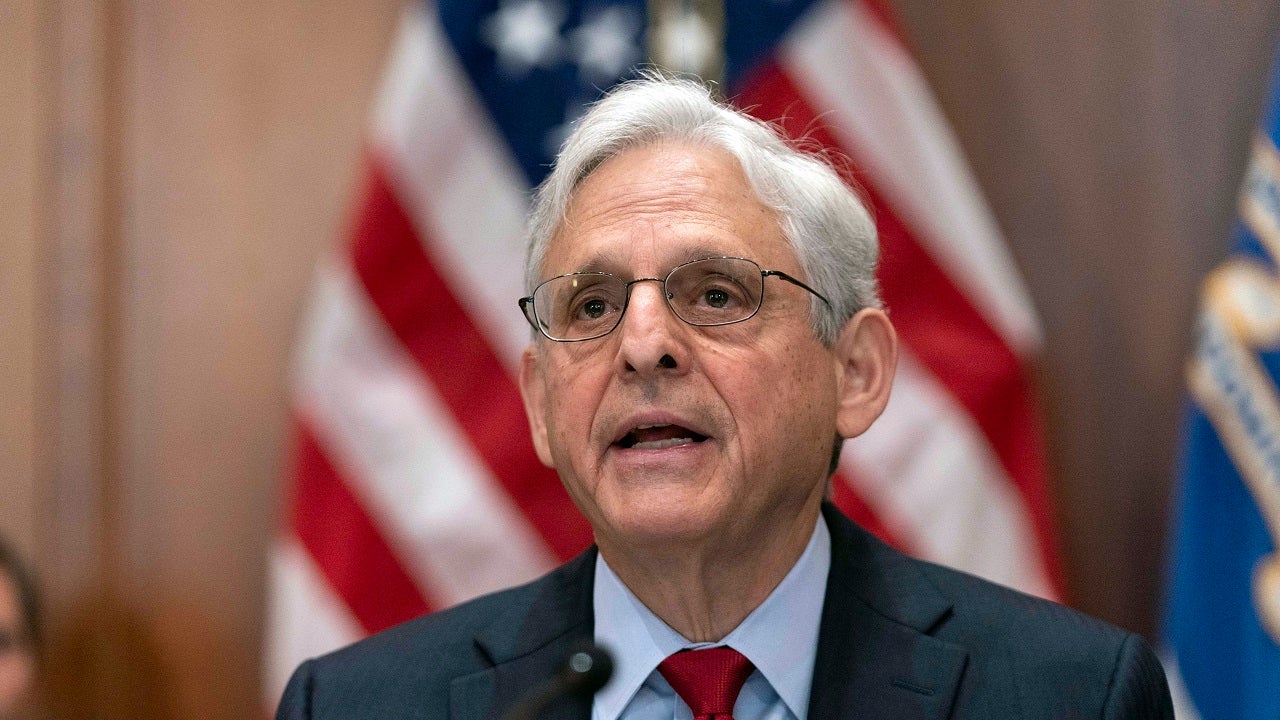Seattle, WA
Seattle Officer on Leave Amid Probe Into Alleged Stalking

Seattle, WA
Seattle pet sitter, family of slain dog walker advocate for neighborhood security

Pet sitter, family of slain dog walker advocate for neighborhood security
A Seattle pet sitter injured in a hit-and-run says she knew Ruth Dalton, the beloved dogwalker who was killed in a carjacking last August. She’s calling for more security cameras in neighborhoods.
SEATTLE – A hit-and-run driver is still on the loose after seriously injuring a pet sitter on Christmas Day while she was out walking her cat near Seward Park in Seattle.
The crash came on the heels of the death of another dog walker this summer, Ruth Dalton, who died alongside her dog Prince, after Seattle Police say she was carjacked and run over by Jahmed Haynes.
“I have a lot of fractures that have to heal before I can learn to walk again,” said Karen Miely, still recovering from a hit-and-run from a care facility in Seattle.
Miely was just transferred to a long-term care facility recently after spending several days in the hospital.
“The biggest milestone would probably be getting the bar out of my pelvis,” said Miely.
She was hit at an intersection near her home while walking her cat Max, also known as Maximus Rex. He escaped unharmed and ran home.
Local perspective:
Miely also knew Ruth Dalton, another local dogwalker and pet caretaker, who was killed last August.
“Ruth used to walk five at a time,” said Miely.
Dalton died after Jahmed Haynes allegedly carjacked her and ran her over as she was caring for several dogs.
“It’s heartbreaking what happened to that family,” said Miely.
“When I heard the story she was hit on Christmas Day, I was like ‘What the heck?’ It’s like open season on dog walkers in Seattle,” said Melanie Roberts, Ruth Dalton’s granddaughter.
Years before the homicide, Dalton was also injured by a random driver, according to her granddaughter.
“She was starting into the crosswalk, and had seen a car a couple blocks away and she thought that they would have seen her in the crosswalk and it was an elderly woman, and she did not see grandma and she hit her in the crosswalk,” said Roberts.
Roberts says Dalton suffered knee injuries.
“My grandma was fortunate that the woman that hit her in 2009, she stopped and it was an honest to God accident, to hear that Karen was hit and left was disheartening,” said Roberts.
Miely wishes more security cameras were rolling where she was hit. Roberts believes Dalton would have advocated for that.
“Almost like neighborhood watch cameras. When she saw cameras around, she felt safer,” said Roberts.
Meantime, an online fundraiser is raising money for Miely’s recovery. She hopes to be home in April.
“I’m thinking, well, that’s around my birthday, I’d like to go home and see my cat. He’s patiently, he’s just being such a good boy,” said Miely.
She says investigators told her a car part was found in the area after the crash. However, it’s unclear if it’s related. FOX 13 reached out to Seattle Police for any updates. We are waiting to hear back.
Miely is continuing to ask anyone with security camera footage from around 7 p.m. on December 25 in the area of South Orcas Street and 51st or 52nd Avenue South to check their cameras and share footage with police if they haven’t done so already.
The Source: Information in this story is from Karen Miely, Melanie Roberts and Seattle Police.
BEST OF FOX 13 SEATTLE
Washington sees record eviction filings in 2024: ‘Not just an isolated incident’
New 2025 laws that are now in effect in WA
Good Samaritan saves mom from road rage incident in WA
Here’s when you’ll need REAL ID to go through US airport security
REI exits ‘Experiences’ businesses, laying off hundreds of employees
To get the best local news, weather and sports in Seattle for free, sign up for the daily FOX Seattle Newsletter.
Download the free FOX LOCAL app for mobile in the Apple App Store or Google Play Store for live Seattle news, top stories, weather updates and more local and national coverage, plus 24/7 streaming coverage from across the nation.
Seattle, WA
Report: Cowboys request interview with Seattle assistant Leslie Frazier

The Cowboys have requested an interview with Seahawks assistant head coach Leslie Frazier, Todd Archer of ESPN reports.
They have an interview scheduled with former Jets head coach Robert Saleh for later this week, per Archer.
If both interviews are in person, that would satisfy the Rooney Rule and allow the Cowboys to make a hire at any point thereafter.
Frazier was the head coach of the Vikings from 2011-13 after taking over as interim coach for the final six games of 2010. He went 21-32-1. This is his first interview request in this hiring cycle.
Frazier, who began his NFL coaching career in 1999, was the Bucs’ defensive coordinator (2014-15), the Ravens’ secondary coach (2016) and the Bills’ defensive coordinator (2017-22) after his stint with the Vikings. He was out of the league in 2023 before Mike Macdonald hired him in Seattle before this season.
Jerry Jones’ eight previous hires for the Cowboys have been either former head coaches and/or have a tie with Jones. Frazier and Saleh both have previous head coaching experience.
Seattle, WA
Sara Nelson Restarts the Debate About Allowing More Housing in SoDo – The Urbanist

A bill introduced by Seattle Council President Sara Nelson this week is set to reignite a debate over allowing housing on Seattle’s industrial lands and the future of the SoDo neighborhood. The industrial zone in question is immediately west and south of T-Mobile and Lumen stadiums, abutting the Port of Seattle. That debate had been seemingly put to rest with the adoption of a citywide maritime and industrial strategy in 2023 that didn’t add housing in industrial SoDo, following years of debate over the long-term future of Seattle’s industrial areas. This bill is likely going to divide advocates into familiar old camps during a critical year of much bigger citywide housing discussions.
The idea of allowing residential uses around the south downtown stadiums, creating a “Maker’s District” with capacity for around 1,000 new homes, was considered by the City in its original analysis of the environmental impact of changes to its industrial zones in 2022. But including zoning changes needed to permit residential uses within the “stadium transition overlay district,” centered around First Avenue S and Occidental Avenue S, was poised to disrupt the coalition of groups supporting the broader package.
Strongly opposed to the idea is the Port of Seattle, concerned about direct impacts of more development close to its container terminals, but also about encroachment of residential development onto industrial lands more broadly.

While the zoning change didn’t move forward then, the constituency in favor of it — advocates for the sport stadiums themselves, South Downtown neighborhood groups, and the building trades — haven’t given up on the idea, and seem to have found in Sara Nelson their champion, as the citywide councilmember heads toward a re-election fight.
“There’s an exciting opportunity to create a mixed-use district around the public stadiums, T-Mobile Park and Lumen Field, that prioritizes the development of light industrial “Makers’ Spaces” (think breweries and artisans), one that eases the transition between neighborhoods like Pioneer Square and the Chinatown-International District and the industrial areas to the south,” read a letter sent Monday signed by groups with ties to the Seattle Mariners and the Seattle Seahawks, labor unions including SEIU and IBEW, and housing providers including Plymouth Housing and the Chief Seattle Club. And while Nelson only announced that she was introducing this bill this week, a draft of that letter had been circulating for at least a month, according to meeting materials from T-Mobile Park’s public stadium district.

Under city code, 50% of residential units built in Urban Industrial zones — which includes this stadium overlay — have to be maintained as affordable for households making a range of incomes from 60% to 90% of the city’s area median income (AMI) for a minimum of 75 years, depending on the number of bedrooms in each unit. And units are required to have additonal soundproofing and air filtration systems to deal with added noise and pollution of industrial areas.
But unlike in other Urban Industrial (UI) zones, under Nelson’s bill, housing within the stadium transition overlay won’t have to be at least 200 feet from a major truck street, which includes Alaskan Way S, First Avenue S, and Fourth Avenue S. Those streets are some of the most dangerous roadways in the city, and business and freight advocates have fought against redesigning them when the City has proposed doing so in the past.
The timing of the bill’s introduction now is notable, given the fact that the council’s Land Use Committee currently has no chair, after District 2 Councilmember Tammy Morales resigned earlier this month, and the council has just started to ramp up work on reviewing Mayor Bruce Harrell’s final growth strategy and housing plan. Nelson’s own Governance, Accountability, and Economic Development Committee is set to review the bill, giving her full control over her own bill’s trajectory, with Councilmembers Strauss and Rinck — the council’s left flank — left out of initial deliberations since they’re not on Nelson’s committee.
As Nelson brought up the bill in the last five minutes of Monday’s Council Briefing, D6 Councilmember Dan Strauss expressed surprise that this was being introduced and directed to Nelson’s own committee. Strauss, as previous chair of the Land Use Committee, shepherded a lot of the work around the maritime strategy forward, and seemed stunned that this was being proposed without a broader discussion.
“Did I hear you say that we’re going to be taking up the industrial and maritime lands discussion in your committee? There is a lot of work left to do around the stadium district, including the Coast Guard [base],” Strauss said. “I’m quite troubled to hear that we’re taking a one-off approach when there was a real comprehensive plan set up last year and to be kind of caught off guard here on the dais like this, without a desire to have additional discussion.”
On Tuesday, Strauss made a motion to instead send the bill to the Select Committee on the Comprehensive Plan, chaired by D3 Councilmember Joy Hollingsworth. After a long discussion of the merits of keeping the bill in Nelson’s committee, the motion was shot down 5-3, with Councilmembers Kettle and Rinck joining Strauss. During public comment, members of the Western States Regional Council of Carpenters specifically asked for the bill to say in Nelson’s committee, a highly unusual move.
Nelson framed her bill Tuesday as being focused on economic development, intended to create more spaces that will allow small industrial-oriented businesses in the city. Nothing prevents those spaces being built now — commercial uses are allowed in the stadium overlay — but Nelson argued that they’ll only come to fruition if builders are allowed to construct housing above that ground-floor retail.
“What is motivating me is the fact that small light industrial businesses need more space in Seattle,” Nelson said. “Two to three makers businesses are leaving Seattle every month or so, simply because commercial spaces are very expensive, and there are some use restrictions for certain businesses. And when we talk about makers businesses, I’m talking about anything from a coffee roaster to a robot manufacturer, places where things are made and sold, and those spaces are hard to find. […] The construction of those businesses is really only feasible if there is something on top, because nobody is going to go out and build a small affordable commercial space for that kind of use”
Opposition from the Port of Seattle doesn’t seem to have let up since 2023.
“Weakening local zoning protections could not come at a worse time for maritime industrial businesses,” Port of Seattle CEO Steve Metruck wrote in a letter to the Seattle Council late last week. “Surrendering maritime industrial zoned land in favor of non-compatible uses like housing invokes a zero-sum game of displacing permanent job centers without creating new ones. Infringing non-compatible uses into maritime industrial lands pushes industry to sprawl outward, making our region more congested, less sustainable, and less globally competitive.”
SoDo is a liquefaction zone constructed on fill over former tideflats and is close to state highways and Port facilities, but not particularly close to amenities like grocery stores and parks. The issue of creating more housing in such a location will likely be a contentious one within Seattle’s housing advocacy world.
Nelson’s move may serve to draw focus away from the larger Comprehensive Plan discussion, a debate about the city’s long-term trajectory on housing. Whether this discussion does ultimately distract from and hinder the push to rezone Seattle’s amenity-rich neighborhoods — places like Montlake, Madrona, and Green Lake — to accommodate more housing remains to be seen.

Ryan Packer has been writing for The Urbanist since 2015, and currently reports full-time as Contributing Editor. Their beats are transportation, land use, public space, traffic safety, and obscure community meetings. Packer has also reported for other regional outlets including Capitol Hill Seattle, BikePortland, Seattle Met, and PubliCola. They live in the Capitol Hill neighborhood of Seattle.
-
/cdn.vox-cdn.com/uploads/chorus_asset/file/25822586/STK169_ZUCKERBERG_MAGA_STKS491_CVIRGINIA_A.jpg)
/cdn.vox-cdn.com/uploads/chorus_asset/file/25822586/STK169_ZUCKERBERG_MAGA_STKS491_CVIRGINIA_A.jpg) Technology7 days ago
Technology7 days agoMeta is highlighting a splintering global approach to online speech
-

 Science5 days ago
Science5 days agoMetro will offer free rides in L.A. through Sunday due to fires
-
/cdn.vox-cdn.com/uploads/chorus_asset/file/25821992/videoframe_720397.png)
/cdn.vox-cdn.com/uploads/chorus_asset/file/25821992/videoframe_720397.png) Technology1 week ago
Technology1 week agoLas Vegas police release ChatGPT logs from the suspect in the Cybertruck explosion
-

 Movie Reviews1 week ago
Movie Reviews1 week ago‘How to Make Millions Before Grandma Dies’ Review: Thai Oscar Entry Is a Disarmingly Sentimental Tear-Jerker
-

 Health1 week ago
Health1 week agoMichael J. Fox honored with Presidential Medal of Freedom for Parkinson’s research efforts
-

 Movie Reviews1 week ago
Movie Reviews1 week agoMovie Review: Millennials try to buy-in or opt-out of the “American Meltdown”
-

 News1 week ago
News1 week agoPhotos: Pacific Palisades Wildfire Engulfs Homes in an L.A. Neighborhood
-

 World1 week ago
World1 week agoTrial Starts for Nicolas Sarkozy in Libya Election Case



/cdn.vox-cdn.com/uploads/chorus_asset/file/25833774/image__1_.png)










